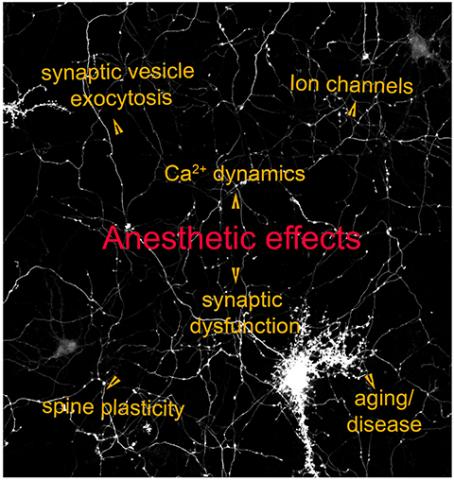The Hemmings and Platholi Labs are interested in understanding the synapse-specific mechanisms of general anesthetics. We seek to identify critical pre- and post-synaptic interactions involved in the modulation of synaptic transmission and plasticity by anesthetics, with a goal of delineating their acute and long-term functional consequences.
The Hemmings Laboratory
The Hemmings Laboratory studies the effects of general anesthetics on neurotransmitter release (e.g. glutamate, GABA, dopamine, norepinephrine, neuropeptides) and their interactions between specific presynaptic proteins involved in the control of neurotransmitter release (ion channels, SNAREs) at the behavioral, network, cellular and molecular levels in animal models, cultured cells and neurons, brain slices, and isolated nerve terminals. Techniques include biochemical, imaging, and electro-physiological approaches.
The Platholi Laboratory
The Platholi Laboratory investigates how anesthetic modulation of activity-dependent signaling molecules, such as BDNF and ion channels, contribute to sustained and pathological actions on synaptic plasticity. Parallel research strategies include pharmacological and molecular assays in cellular systems, functional Ca²⁺ imaging, and behavioral studies in transgenic mouse models, to identify how anesthetic-mediated disruption of activity-dependent signaling intersects with genetic variation, aging, and neurodegenerative disease to influence susceptibility for synaptic dysfunction.
Lab Teams

We work at the intersection between neurophysiological and pathological actions of diverse anesthetic agents, with a goal to identify synaptic signaling proteins involved in these diverse effects.
Our Research

Our labs combine a diverse set of talents and approaches to enhance mechanism-based use of current anesthetic drugs and advance development of new and safer agents.


